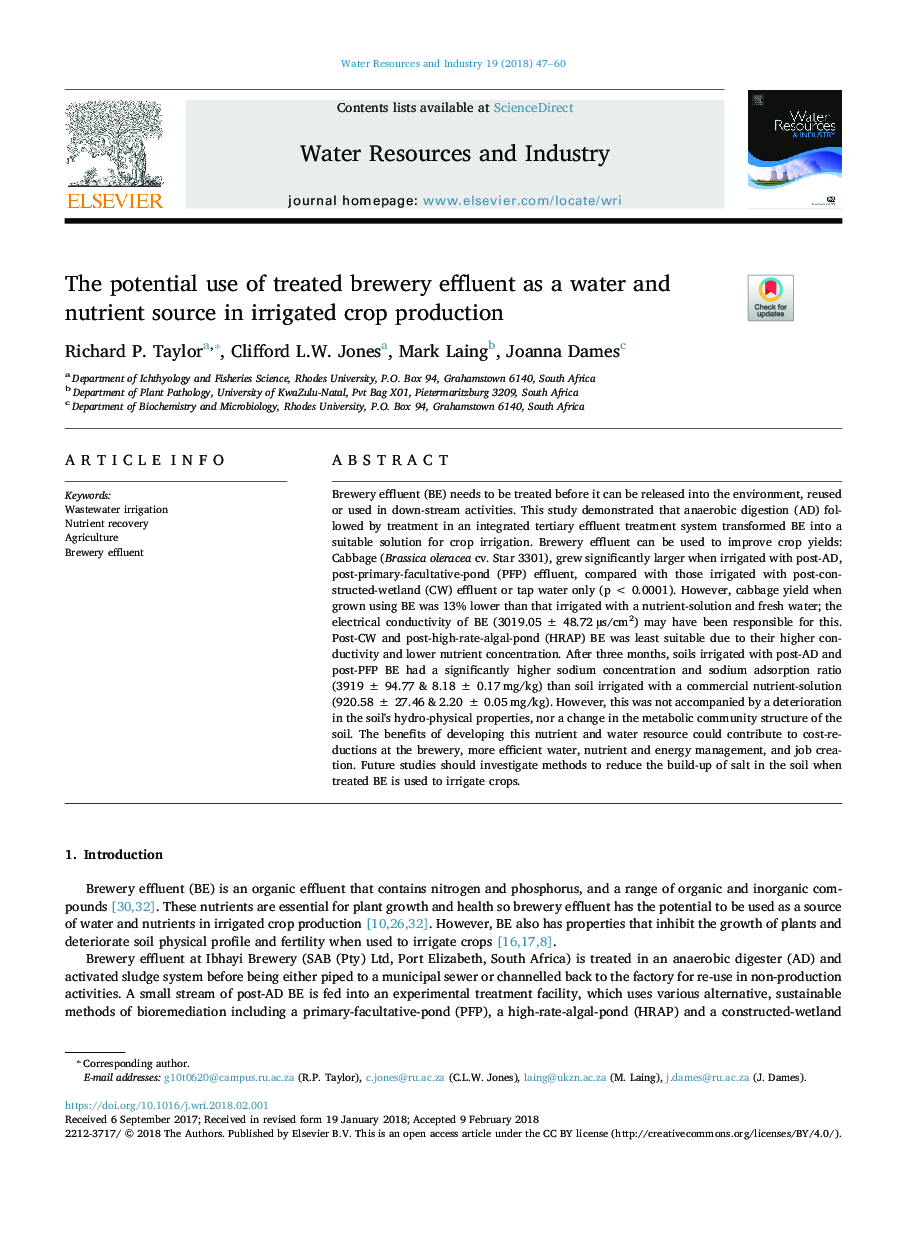| کد مقاله | کد نشریه | سال انتشار | مقاله انگلیسی | نسخه تمام متن |
|---|---|---|---|---|
| 8863008 | 1620157 | 2018 | 14 صفحه PDF | دانلود رایگان |
عنوان انگلیسی مقاله ISI
The potential use of treated brewery effluent as a water and nutrient source in irrigated crop production
ترجمه فارسی عنوان
استفاده بالقوه از پساب های تحت درمان با آبجو به عنوان یک منبع آب و مواد مغذی در تولید محصولات آبیاری
دانلود مقاله + سفارش ترجمه
دانلود مقاله ISI انگلیسی
رایگان برای ایرانیان
کلمات کلیدی
آبیاری آبیاری، بازیابی مواد مغذی، کشاورزی، پساب آبیاری،
موضوعات مرتبط
علوم زیستی و بیوفناوری
علوم کشاورزی و بیولوژیک
علوم آبزیان
چکیده انگلیسی
Brewery effluent (BE) needs to be treated before it can be released into the environment, reused or used in down-stream activities. This study demonstrated that anaerobic digestion (AD) followed by treatment in an integrated tertiary effluent treatment system transformed BE into a suitable solution for crop irrigation. Brewery effluent can be used to improve crop yields: Cabbage (Brassica oleracea cv. Star 3301), grew significantly larger when irrigated with post-AD, post-primary-facultative-pond (PFP) effluent, compared with those irrigated with post-constructed-wetland (CW) effluent or tap water only (pâ¯<â¯0.0001). However, cabbage yield when grown using BE was 13% lower than that irrigated with a nutrient-solution and fresh water; the electrical conductivity of BE (3019.05â¯Â±â¯48.72â¯Âµs/cm2) may have been responsible for this. Post-CW and post-high-rate-algal-pond (HRAP) BE was least suitable due to their higher conductivity and lower nutrient concentration. After three months, soils irrigated with post-AD and post-PFP BE had a significantly higher sodium concentration and sodium adsorption ratio (3919â¯Â±â¯94.77 & 8.18â¯Â±â¯0.17â¯mg/kg) than soil irrigated with a commercial nutrient-solution (920.58â¯Â±â¯27.46 & 2.20â¯Â±â¯0.05â¯mg/kg). However, this was not accompanied by a deterioration in the soil's hydro-physical properties, nor a change in the metabolic community structure of the soil. The benefits of developing this nutrient and water resource could contribute to cost-reductions at the brewery, more efficient water, nutrient and energy management, and job creation. Future studies should investigate methods to reduce the build-up of salt in the soil when treated BE is used to irrigate crops.
ناشر
Database: Elsevier - ScienceDirect (ساینس دایرکت)
Journal: Water Resources and Industry - Volume 19, June 2018, Pages 47-60
Journal: Water Resources and Industry - Volume 19, June 2018, Pages 47-60
نویسندگان
Richard P. Taylor, Clifford L.W. Jones, Mark Laing, Joanna Dames,
